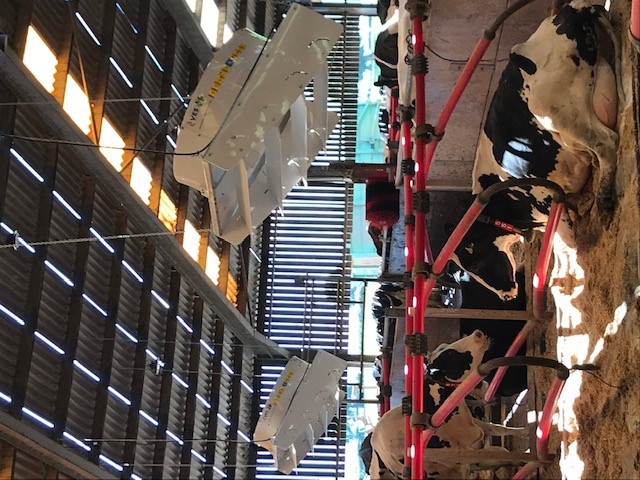How Can Poor Ventilation Effect Calf Growth?
A poor start to a calf’s life which impacts growth rates can significantly affect future performance in the herd. Wynnstay’s Account Manager for Biosecurity and Hardware, Richard Wild, says a key factor in poor growth rates, and subsequent milking and DLWG performance, is housing and ventilation.
After nutrition, Richard says housing and environment are critical to getting the calf off to the best start, and with that comes good ventilation.
“A poorly ventilated calf shed can lead to a host of respiratory issues, such as pneumonia and BRD, as well as other pathogen-causing diseases such as cocci and other clostridial diseases.
“It’s a simple issue to identify and assess - the investments made will pay off in the bulk tank in 22 to 24 months, or by getting calves finished within 18 months.”
Richard says the first step is to identify the issue. “We want good airflow, but this doesn’t necessarily mean we want an open shed. What’s needed is a controlled environment where we can manage and monitor airflow, humidity and temperature, without the reliance on mother nature.”
What Are the Signs of Poor Ventilation?
Signs of poor ventilation include:
- Smell – a musty, ‘unfresh’ smell in the building
- Cobwebs in the roof
- Increased cases of pneumonia, BRD and other respiratory issues
- The ‘fog test’ to show air circulation – if it doesn’t rise and ‘escape’ there’s a ventilation issue


In practice on-farm in Whitchurch
One farmer who came to us with a ventilation issue was Julian Bowers, a beef producer in north Shropshire.
His calf shed was open-sided so in theory, there is consistent airflow, but it was inconsistent in its delivery. In the summer, calves were too hot, therefore feed intake dropped, with growth rates following suit. Likewise, over the winter months, growth rates were stunted by cold, windy weather and an increase in pneumonia and other respiratory issues.
We identified that the best solution was to create an environment we can control. We decided to make the building enclosed and introduced a series of fans – some extracting air from the outside, some circulating the air throughout the shed, and others acting as exhaust fans to take the air back out of the shed.
This created a consistent airflow, and within six weeks Julian saw improvements in growth rates and reductions in respiratory issues. As a result, calves are now meeting their target growth rates. We’re now working to convert the old milking parlour in a similar way, to provide additional housing.













